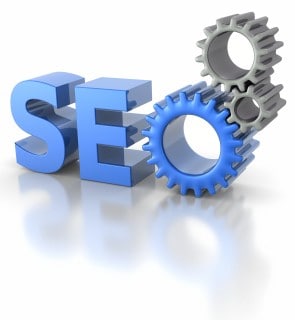In today’s rapidly evolving digital landscape, building brand awareness has become an indispensable element of any successful marketing strategy. The ability to capture the attention and trust of consumers is the key to unlocking the true potential of your brand. As businesses compete for the limited attention span of their target audience, it has become imperative to navigate the complex realm of website optimization, demand generation, and lead generation to maximize the impact of your brand.
Website optimization lies at the core of creating a strong online presence. Your website is more than just a digital storefront; it is a powerful gateway that can connect you with your desired audience. From user-friendly navigation to aesthetically pleasing designs, every element plays a crucial role in elevating the user experience. Through effective website optimization techniques, you can ensure that your brand remains visible and resonates with visitors, creating a lasting impression that inspires them to take action.
While demand generation and lead generation are both essential components of a comprehensive marketing strategy, understanding the key differences between the two is crucial. Demand generation focuses on creating awareness and generating interest in your brand, products, or services among your target audience. On the other hand, lead generation is about capturing information from potential customers who have expressed an interest in your offerings. By striking a balance between these two approaches, you can fuel the growth of your brand by attracting and nurturing valuable leads while also creating a buzz in the market.
In the vast realm of digital marketing, brand awareness serves as the foundation on which all other efforts are built. It encompasses the extent to which consumers recognize, remember, and recall your brand. A strong brand awareness not only enhances your credibility but also establishes a deep emotional connection with your target market. By leveraging various digital marketing channels such as social media, search engine optimization, and content marketing, you can amplify your brand’s visibility, engage with your audience, and cultivate a loyal customer base.
Unleashing the power of brand awareness requires a strategic roadmap that encompasses website optimization, a clear differentiation between demand and lead generation, and an effective digital marketing approach. By embarking on this journey, you can position your brand as a force to be reckoned with in the ever-competitive business landscape, driving long-term success and sustainable growth.
1. The Importance of Website Optimization
Having a well-optimized website plays a crucial role in enhancing brand awareness and driving business success. With increasing competition in the digital landscape, a website that is user-friendly, visually appealing, and functional is key to capturing the attention of potential customers.
Website optimization involves various aspects such as page speed, mobile responsiveness, and search engine optimization (SEO). By ensuring that your website loads quickly and functions seamlessly across different devices, you provide a positive user experience that encourages visitors to stay and explore further.
In addition, optimizing your website for search engines enables your brand to be easily discoverable by potential customers. By incorporating relevant keywords and meta tags, you increase the chances of appearing in search engine results, bringing in organic traffic and increasing brand visibility.
Furthermore, a well-optimized website helps in converting website traffic into leads or sales. By providing clear calls-to-action and user-friendly navigation, you guide visitors towards the desired actions, whether it’s signing up for a newsletter, making a purchase, or contacting your business.
In summary, website optimization is a crucial aspect of building brand awareness and driving business growth. A well-optimized website ensures a positive user experience, improved search engine visibility, and increased chances of converting website visitors into customers.
2. Understanding Demand Generation vs Lead Generation
Demand generation and lead generation are both crucial aspects of a successful marketing strategy, but it’s important to understand the differences between the two. While they may sound similar, they serve distinct purposes and have unique approaches.
Demand Generation: Creating Interest and Awareness
Demand generation focuses on creating interest and awareness about your brand among a broad audience. It aims to generate a need or desire for your products or services, even among those who may not be actively looking for them. This approach involves building brand reputation and positioning your company as a thought leader within your industry.
To achieve effective demand generation, digital marketing plays a critical role. Through various online channels such as social media, email marketing, and content creation, you can reach a wide range of potential customers and educate them about your brand’s value proposition. Website optimization also plays a significant role in demand generation, ensuring that your website is easily discoverable and provides a seamless user experience.

Lead Generation: Capturing Potential Customers
Lead generation, on the other hand, focuses on capturing information from potential customers who have shown interest in your products or services. The goal is to collect valuable data, typically in the form of contact information, that can be used for further marketing efforts and sales conversions.
In the realm of lead generation, digital marketing techniques such as targeted advertising, landing page optimization, and email marketing campaigns are often employed. These tactics aim to entice potential customers to provide their contact details in exchange for valuable content, discounts, or other incentives. By effectively nurturing these leads, businesses can increase their chances of converting them into paying customers.
Balancing Demand Generation and Lead Generation
Both demand generation and lead generation are essential components of a comprehensive marketing strategy. While demand generation creates awareness and interest on a broader scale, lead generation helps to identify potential customers and capture their information.
Finding the right balance between these two strategies is crucial for driving brand awareness and maximizing conversions. By understanding their differences, businesses can align their marketing efforts to optimize growth and success in the digital landscape.
3. Building Lasting Brand Awareness through Digital Marketing
How Much Does A Fractional Cmo Cost
In today’s digital age, building a lasting brand awareness is crucial for businesses to thrive. With the right digital marketing strategies, businesses can effectively reach their target audience and establish a powerful brand presence. This section highlights the key steps to unlock the potential of brand awareness through digital marketing.
Website Optimization: The foundation of any successful digital marketing campaign lies in optimizing your website. Ensuring that your website is user-friendly, visually appealing, and offers valuable content is essential. By focusing on search engine optimization (SEO) techniques, such as using relevant keywords, meta tags, and high-quality backlinks, you can improve your website’s visibility and attract more organic traffic. A well-optimized website also enhances the overall user experience, making visitors more likely to remember your brand.
Demand Generation vs Lead Generation: While lead generation is important for obtaining potential customers, demand generation plays a key role in building brand awareness. By creating engaging and informative content such as blog posts, social media updates, and videos, businesses can generate demand for their products or services. Sharing valuable insights and industry knowledge not only positions your brand as an authority but also encourages people to actively seek out your content. By consistently providing valuable information, you can build trust and credibility among your target audience, ultimately increasing brand awareness.
Leveraging Digital Marketing Channels: The power of brand awareness lies in the ability to strategically leverage different digital marketing channels. Social media platforms, such as Facebook, Instagram, and Twitter, provide opportunities to connect with a vast audience and engage with them directly. Through targeted advertising campaigns, businesses can reach their desired demographic and increase brand visibility. Email marketing is another effective channel, allowing businesses to nurture relationships with their customers and keep them updated about new products, promotions, or company news. By combining these channels and tailoring the messaging to fit each platform, businesses can amplify their brand reach and create lasting brand awareness.
By following these strategies and embracing the potential of digital marketing, businesses can unleash the power of brand awareness. Remember, building lasting brand awareness takes time and effort. Consistency, relevant content, and targeted marketing are key to establishing a strong and recognizable brand presence in the digital landscape.



